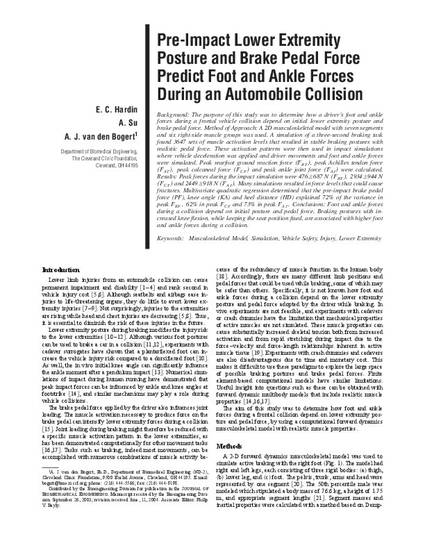
Background: The purpose of this study was to determine how a driver’s foot and ankle forces during a frontal vehicle collision depend on initial lower extremity posture and brake pedal force. Method of Approach: A 2D musculoskeletal model with seven segments and six right-side muscle groups was used. A simulation of a three-second braking task found 3647 sets of muscle activation levels that resulted in stable braking postures with realistic pedal force. These activation patterns were then used in impact simulations where vehicle deceleration was applied and driver movements and foot and ankle forces were simulated. Peak rearfoot ground reaction force ~FRF! , peak Achilles tendon force ~FAT! , peak calcaneal force ~FCF! and peak ankle joint force ~FAJ! were calculated.Results: Peak forces during the impact simulation were 4766687 N ~FRF! , 29346944 N ~FCF! and 24496918 N ~FAJ! . Many simulations resulted in force levels that could cause fractures. Multivariate quadratic regression determined that the pre-impact brake pedal force (PF), knee angle (KA) and heel distance (HD) explained 72% of the variance in peak FRF , 62% in peak FCF and 73% in peak FAJ . Conclusions: Foot and ankle forces during a collision depend on initial posture and pedal force. Braking postures with increased knee flexion, while keeping the seat position fixed, are associated with higher foot and ankle forces during a collision.

This research was supported by the Aircast Foundation.